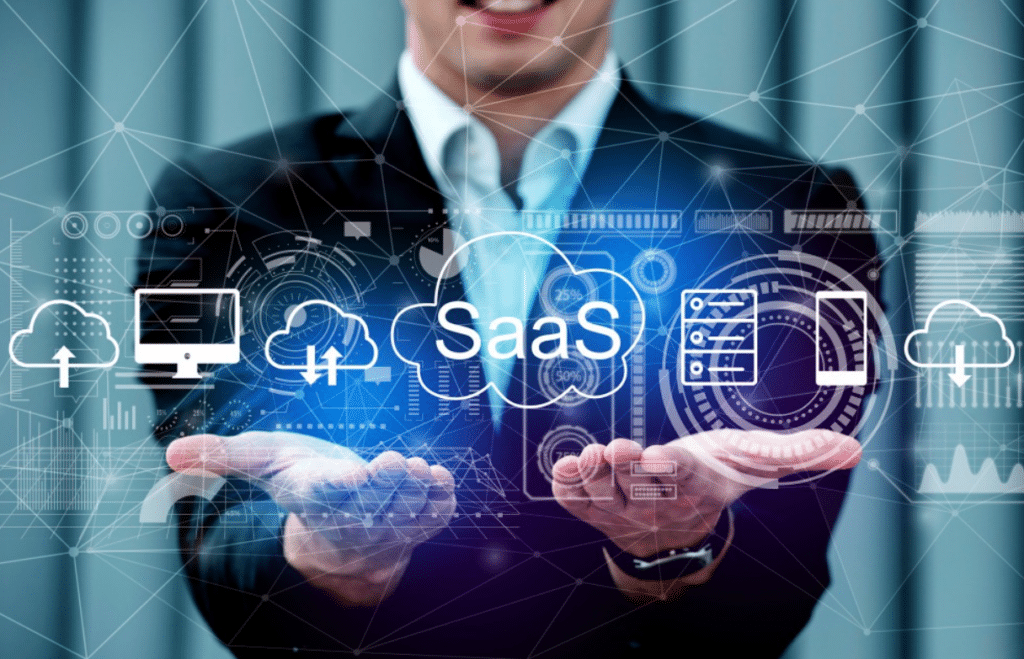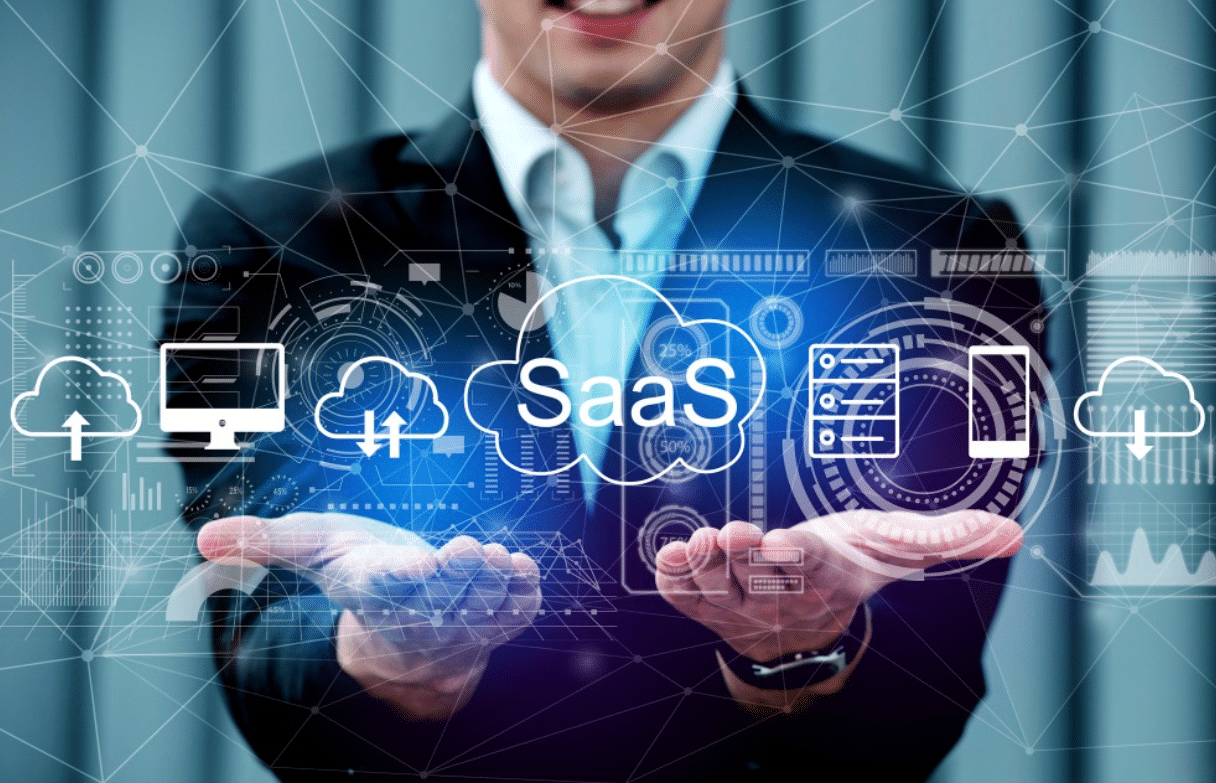SaaS ERP: The Future of Enterprise Resource Planning – In today’s fast-paced digital world, businesses of all sizes are constantly looking for ways to streamline operations, increase efficiency, and stay competitive. One of the most significant advancements in enterprise technology is the shift from traditional on-premise Enterprise Resource Planning (ERP) systems to SaaS ERP solutions.
SaaS ERP (Software-as-a-Service Enterprise Resource Planning) is a cloud-based software solution that enables businesses to manage core business functions—including finance, supply chain, human resources, customer relationship management, and more—without requiring on-premise infrastructure. Instead of investing in expensive servers and IT personnel to maintain the system, businesses can access SaaS ERP through a web browser, paying only for what they need.
This article explores the concept of SaaS ERP, its benefits, challenges, and the top SaaS ERP solutions available today.

What is SaaS ERP?
SaaS ERP is a cloud-hosted Enterprise Resource Planning software that allows businesses to integrate and automate their core business processes using an internet-based platform. Unlike traditional ERP systems, which require on-site servers and significant IT infrastructure, SaaS ERP is hosted in the cloud and provided to businesses as a subscription-based service.
With SaaS ERP, companies can access their data from anywhere, at any time, using a web browser or mobile app. This level of flexibility makes SaaS ERP an attractive option for businesses looking for a scalable and cost-effective solution.
How Does SaaS ERP Work?
A SaaS ERP system is hosted on cloud servers maintained by the ERP provider. Businesses subscribe to the service and access it via the internet, similar to how they would use web-based applications like Gmail, Dropbox, or Microsoft 365. The SaaS ERP provider handles updates, security patches, and system maintenance, ensuring that businesses always have access to the latest features without any additional IT workload.
Key Characteristics of SaaS ERP:
- Subscription-Based Pricing: Businesses pay a monthly or annual fee based on their needs.
- Cloud-Based Access: ERP software is accessible from anywhere with an internet connection.
- Automatic Updates: The vendor handles software updates and security patches.
- Scalability: Businesses can add new features or users as they grow.
- Data Security: Providers ensure high-level security, data backups, and compliance with industry standards.
Benefits of SaaS ERP
1. Cost Savings
Traditional ERP solutions require significant upfront costs, including hardware, software licenses, and IT staff to manage installations and updates. SaaS ERP eliminates these costs, providing a pay-as-you-go model that reduces financial strain, especially for small and medium-sized businesses (SMBs).
2. Easy Deployment and Maintenance
Since SaaS ERP runs on cloud infrastructure, businesses don’t need to worry about complex installations or maintenance. The provider takes care of updates, patches, and improvements, ensuring that the system remains up-to-date and secure without requiring manual intervention.
3. Scalability and Flexibility
As a business grows, so do its ERP needs. SaaS ERP allows businesses to scale up or down quickly by adding or removing features, modules, and users as required. This flexibility ensures that businesses only pay for what they need.
4. Remote Access and Collaboration
One of the most significant advantages of SaaS ERP is its ability to support remote work. Employees can access the system from anywhere, making it ideal for businesses with multiple locations or a remote workforce. Teams can collaborate more effectively, accessing real-time data and reports from any device.
5. Improved Security and Compliance
Many businesses worry about data security when moving to the cloud. However, SaaS ERP providers use advanced encryption, firewalls, and compliance measures to protect business data. Since security updates are handled automatically, businesses are less vulnerable to cyber threats and data breaches.
6. Integration with Other Cloud Applications
Many SaaS ERP solutions integrate seamlessly with other cloud-based applications, such as CRM (Customer Relationship Management), e-commerce platforms, payroll services, and third-party accounting software. This allows businesses to build a fully connected digital ecosystem.
7. Faster Implementation
Traditional ERP systems can take months or even years to implement fully. SaaS ERP, on the other hand, can be deployed in weeks or even days, allowing businesses to take advantage of its features quickly.
Challenges of SaaS ERP
Despite its many benefits, SaaS ERP is not without challenges. Here are some of the common concerns businesses face when considering a move to cloud-based ERP:
- Data Security and Privacy
While most SaaS ERP providers offer robust security measures, businesses must trust third-party vendors with their data. Companies dealing with sensitive customer or financial information should carefully assess the provider’s security policies, compliance certifications, and encryption standards. - Limited Customization
Traditional on-premise ERP systems allow for deep customization based on a company’s specific needs. SaaS ERP solutions, on the other hand, may offer limited customization options. Some vendors allow for modular add-ons, but businesses that require extensive custom workflows may find cloud ERP restrictive. - Internet Dependency
Since SaaS ERP is cloud-based, businesses need a stable internet connection to access their data. If the internet goes down, business operations may be disrupted. However, many SaaS ERP providers offer offline functionality or backup solutions to mitigate this risk. - Long-Term Costs
Although SaaS ERP reduces upfront costs, subscription fees can add up over time. Businesses should compare the total cost of ownership (TCO) of SaaS ERP versus traditional ERP to determine which model makes the most financial sense. - Vendor Lock-In
Switching from one SaaS ERP provider to another can be challenging, as data migration and integration with existing systems can be complex. Businesses should evaluate the long-term viability of their ERP provider before committing to a solution.
Top SaaS ERP Solutions in 2025
There are numerous SaaS ERP solutions available, each catering to different business needs. Below are some of the top SaaS ERP systems in the market:
- NetSuite ERP
Owned by Oracle, NetSuite ERP is one of the most popular cloud-based ERP solutions for small and mid-sized businesses. It offers financial management, inventory control, eCommerce, and CRM in a single platform. - SAP Business ByDesign
A powerful SaaS ERP solution for mid-sized businesses, SAP Business ByDesign, offers finance, supply chain, HR, and project management functionalities. It is designed to provide real-time insights and automation to improve business processes. - Microsoft Dynamics 365 Business Central
Ideal for small and growing businesses, Microsoft Dynamics 365 Business Central integrates seamlessly with Microsoft products like Office 365, Power BI, and Teams, making it a strong choice for companies already using the Microsoft ecosystem. - Acumatica Cloud ERP
Acumatica is a flexible and user-friendly SaaS ERP designed for small and medium businesses. It provides finance, distribution, project accounting, and CRM features and is known for its scalability and transparent pricing. - Odoo ERP
An open-source SaaS ERP, Odoo is highly customizable and offers affordable pricing. It includes modules for CRM, inventory, manufacturing, eCommerce, and HR, making it an excellent option for startups and SMEs.
6. Workday ERP
Workday is a leading SaaS ERP solution focused on finance and human capital management (HCM). It is widely used by enterprises that need HR, payroll, and talent management solutions in one platform.
Conclusion
SaaS ERP is revolutionizing the way businesses manage their operations, offering cost-effective, scalable, and flexible solutions. With features such as real-time data access, automation, seamless integrations, and cloud security, businesses can streamline operations, improve efficiency, and make better decisions.
While SaaS ERP presents some challenges, the benefits far outweigh the drawbacks, making it an ideal choice for modern businesses looking to stay ahead in a competitive market.
As cloud technology continues to evolve, SaaS ERP solutions will become even more sophisticated, providing businesses with more innovative, faster, and more efficient ways to manage their operations.

